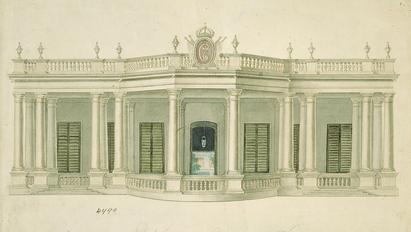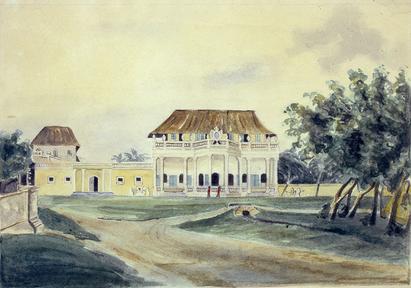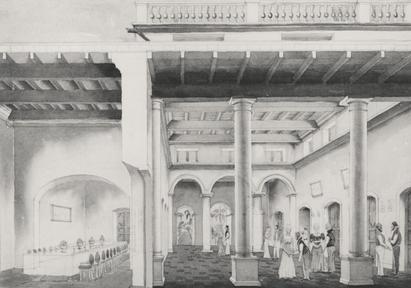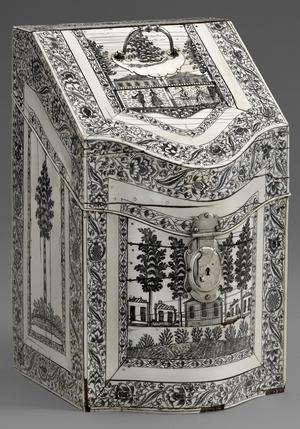History of Governor’s Residence (1773-2009)
Since the establishment of the Danish trading station in Tranquebar in 1620, the governors had their official residence in Fort Dansborg. When the Danish presence from the 1660s assumed a more permanent character, the governors – like other government officials – increasingly preferred to stay outside Dansborg in rented or owned townhouses.
In 1784, the Danish state bought the stately house on the parade ground opposite Fort Dansborg from previous Governor David Brown to serve as the official residence of the Danish governor in Tranquebar.


The grand three-winged house was built as the private home of an affluent British merchant in the 1773 in the British colonial Palladian style with a flat roof and a front colonnade. Parallel to traditional Tamil architecture, the house was furnished with a large inner courtyard. From the courtyard there was direct access to the garden laid out in the baroque French style. On the large compound east of the garden were warehouses, stables, a shed for vehicles and palanquins, a kitchen, and rooms for domestic servants and stable hands.
When taken over by the Danish state, the façade of the house was refurbished with a large, central veranda and a double front colonnade as directed by Governor Peter Anker, making the Governor’s residence the grandest and most spectacular house in town.
The house functioned as the private home of the shifting governors and their families and as the place of official meetings, gatherings and receptions of foreign delegations. With banquets, dances, and get-togethers regularly held in the house, the Governor’s residence was an important venue for social life in the European community in Tranquebar.



The daily lives of Danish governors and their families are documented in informal letters sent to family and friends and in notes and diaries written by the guests that visited the Governor’s Residence over the years. Moreover, the governors sent formal reports home to the Danish King about the affairs in the trading station. Today, several of these documents are kept in Danish archives and narrate private lives, public celebrations, and official visits and ceremonies in the Governor's Residence along with interpersonal relations among the Danish expatriates and their local counterparts and servants.
During the late 18th and early 19th centuries, the furnishing and decoration of European houses in Tranquebar was chiefly European in style. Furnishing one’s house with upholstered sofas, card tables, mirrors or guéridons had the obvious function to render at least a visual sense of homeliness in a new, strange, and foreign world. The furniture was usually produced from local materials by local craftsmen, and inventory lists from the Governor’s residence from different periods give several details on the amount and type of furniture and household articles in the house.

When Danes left Tranquebar in 1845, the residence of the governor was left empty. In 1860, the British converted the building into a courthouse and it functioned as such until 1884.
In the 1910s, the house was turned into a regional office for the storage and trade of salt that functioned until 1985, when the house and large compound was taken over by the Tamil Nadu State Department of Tourism, who soon after built and opened a new hotel in the backyard, Hotel Tamil Nadu.
The former Governor’s residence is one of the most architecturally spectacular and historically important buildings in Tranquebar. Two other significant constructions, Fort Dansborg and the Land Gate, both have official status as historical monuments protected by Indian antiquarian authorities, and are therefore well preserved.
Text: Professor Esther Fihl and Research Assistant Caroline Lillelund, 2015
Web design and supervision: Assistant Curator Bente Gundestrup
Language editing: Research Assistant Manasa Bollempali